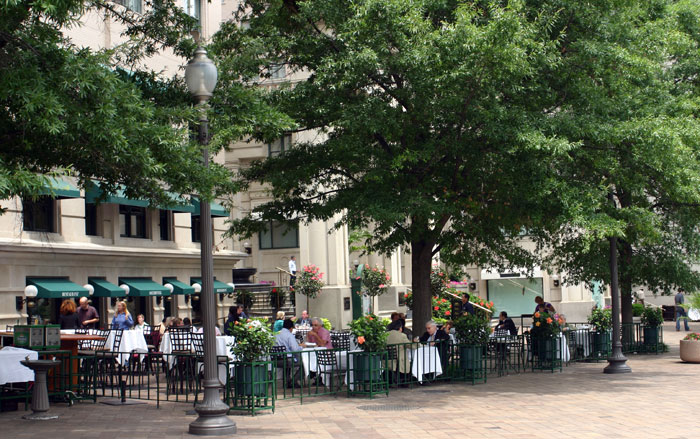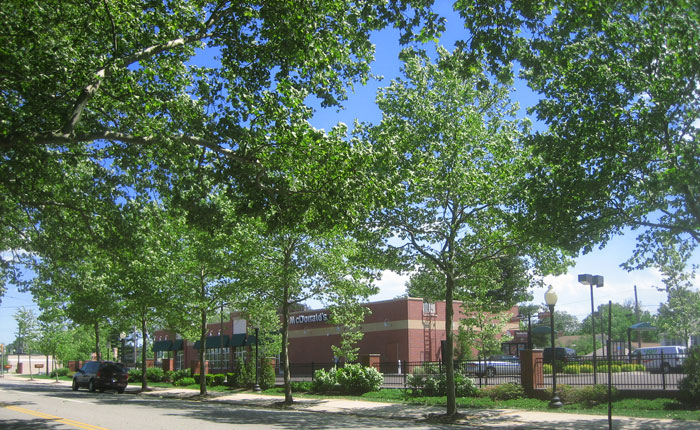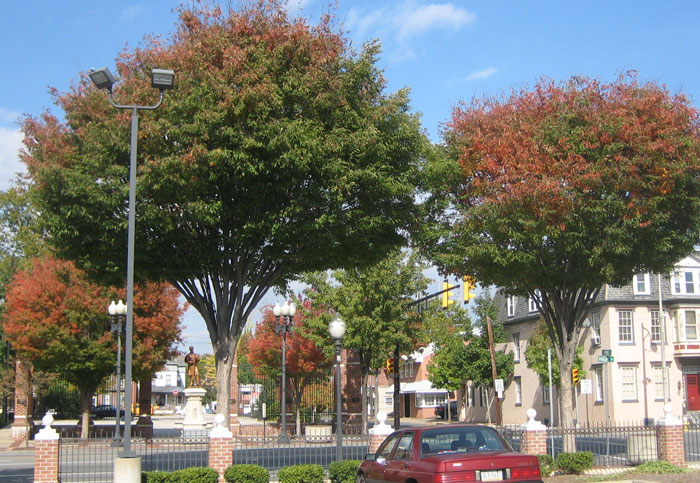10 best street trees
Although there are dozens of species of trees, only a few make good street trees. For example, just 10 species comprise almost 75 percent of New York City's 700,000 street trees.
The first requirement of a street tree is that it can live under the most difficult urban conditions: air pollution, dog urine, soil compaction, and general abuse.
The second requirement is that it can get big. Large canopy trees will grow high enough to shade buildings, streets, and parking lots, cooling the air below. Their large leaf surface area can absorb rain water, carbon dioxide, and pollutants. They create a high, airy ceiling over our buildings, streets, and parking lots, turning our towns in sanctuaries of green.
London plane
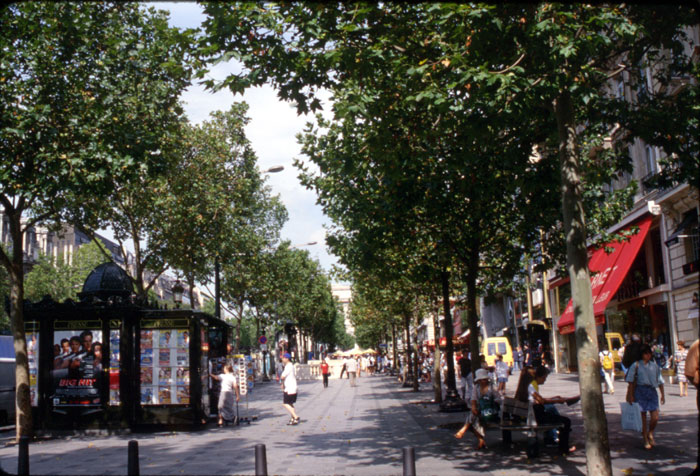
The London plane, a cross between the American sycamore and the English Oriental plane, is the king of street trees. It is the world's favorite urban tree because it is tall, big-leafed, hardy and long-lived. Like the Timex, a London plane can take a licking and keep on ticking. London planes are by far the most common tree in London, Paris (above), Rome, New York City, Nanjing, China (below)...
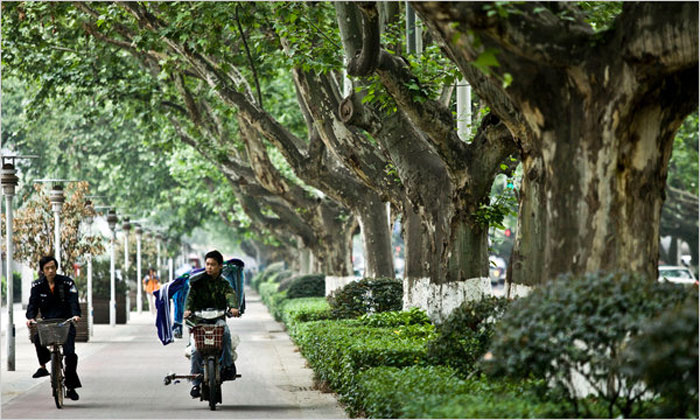
... and even Pottstown, Pennsylvania, where they grace the local McDonald's, below.
American elm
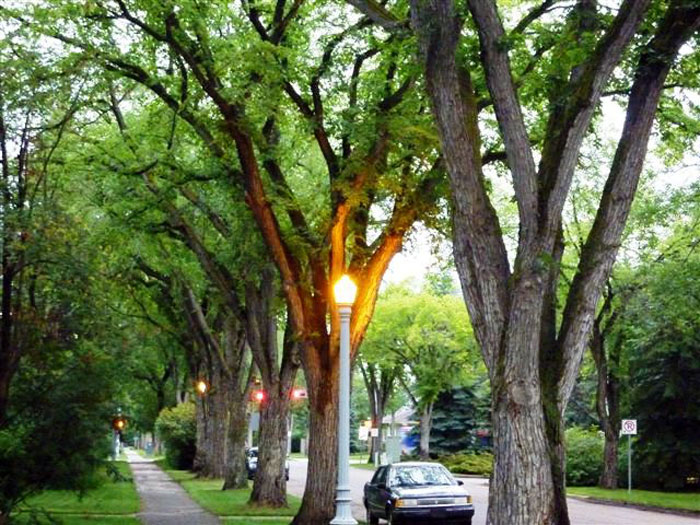 The American elm was once the most common street tree in America, until it was slowly decimated by the Dutch elm disease starting in the 1930s. In recent years, however, the elm has been making a comeback with disease-resistant cultivars such as the Princeton elm, named after a two-century-old tree in a Princeton, N.J., cemetery whose descendants are increasingly planted around the country, including in front of the White House, below.
The American elm was once the most common street tree in America, until it was slowly decimated by the Dutch elm disease starting in the 1930s. In recent years, however, the elm has been making a comeback with disease-resistant cultivars such as the Princeton elm, named after a two-century-old tree in a Princeton, N.J., cemetery whose descendants are increasingly planted around the country, including in front of the White House, below.
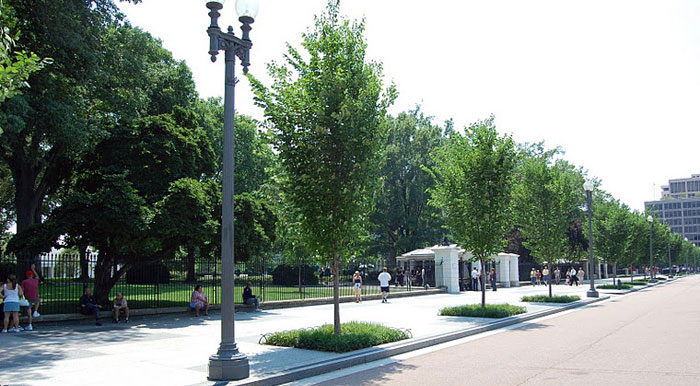
Linden
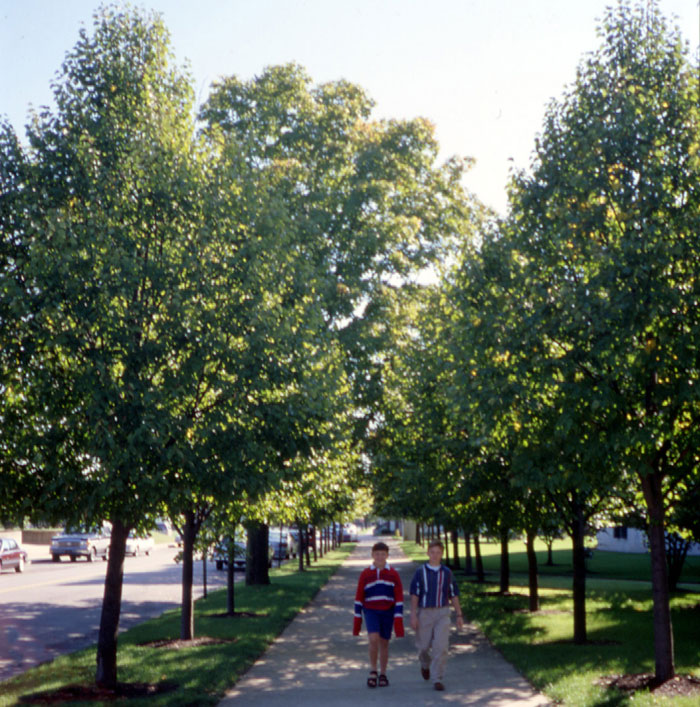
The American linden and the little leaf linden, shown above in Columbus, Indiana, are among the world's loveliest street trees. They put out a fragrant flower in June. Perhaps the most famous boulevard in Berlin, "Unter den Linden," (below) has been planted with linden trees since the mid-1600s.
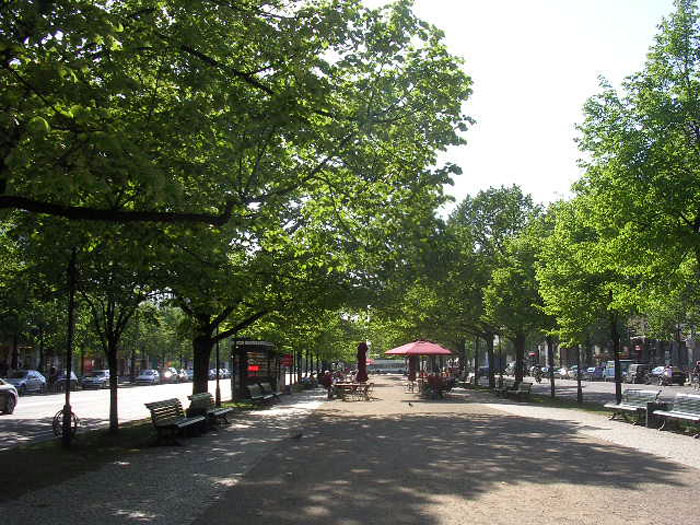
Northern red oak
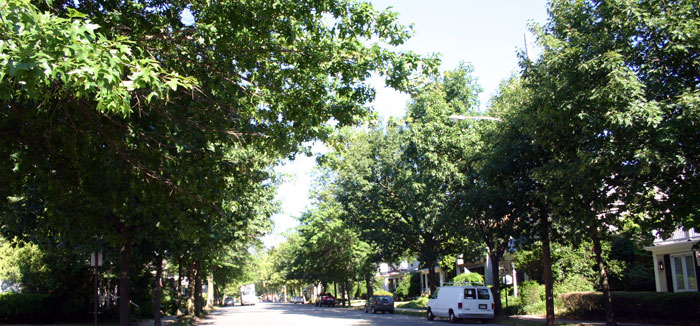
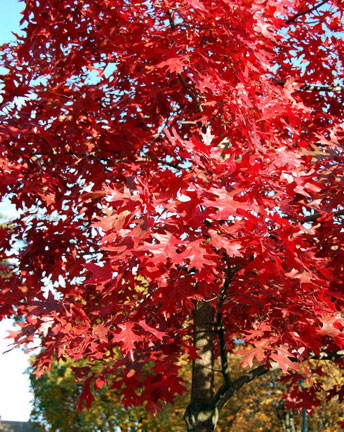
The northern red oak, above, a mainstay of Pottstown's High Street, displays a rich red color in the fall, right. Strong-limbed, it is an excellent street tree that can tolerate difficult urban conditions. It can grow to 80 feet tall.
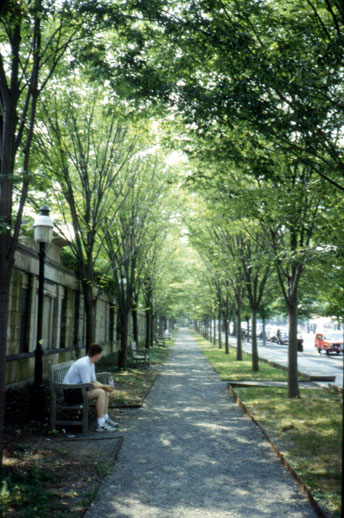
Zelkova
The zelkova is a native Asian tree that has a short trunk and ascending branches that form a vase-like shape. Zelkovas, which can grow to 60 feet, turn a lovely rusty red color in the fall, below.
Sweetgum
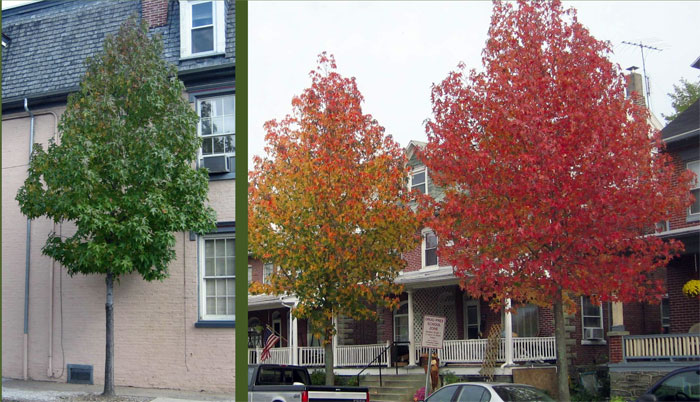
The sweetgum grows to form a even, ovate crown 50 to 75 feet tall at maturity. It displays a wide variety of fall colors, from yellow to bright red to purple. Its twigs have corky ridges, and after about 10 years it drops little woody picker balls which kids find fascinating.
Scholar tree (sophora japonica)
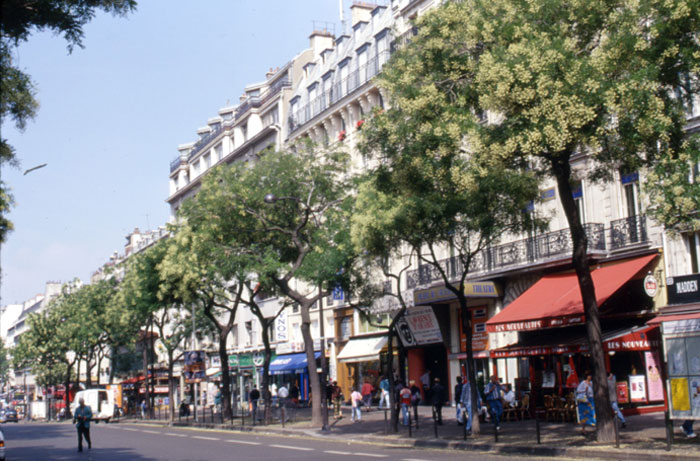
An Asian tree that is often planted in the United States, the scholar tree is second in popularity only to the London plane in Paris, above. It gets creamy white flower clusters in the summer. Below, an allee of young scholar trees planted by Trees Inc. start to turn yellow in the fall.
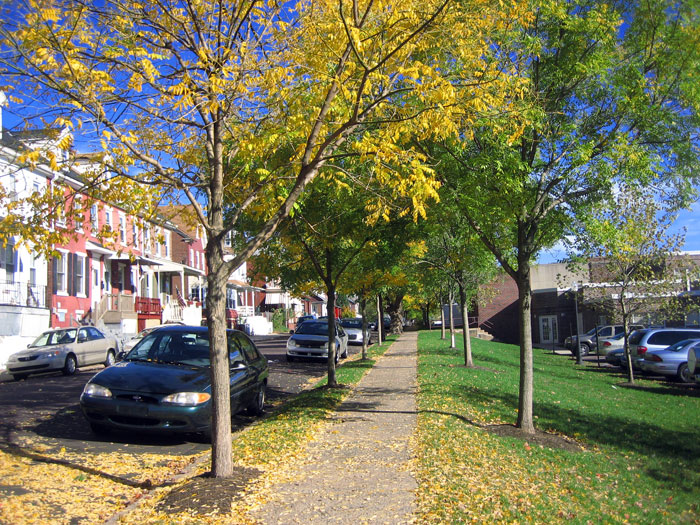
Honey locust
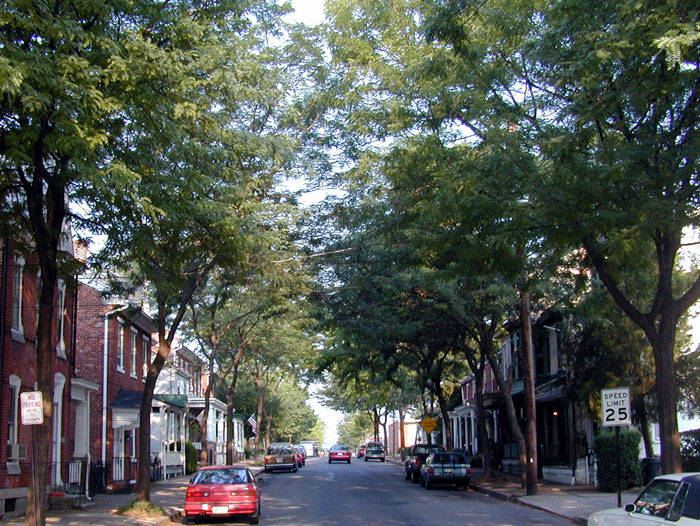
The honey locust has an open branch structure and tiny compound leaves which create very light shade. They are good to plant over grassy areas where some sun is desired. Honey locusts are among the toughest street trees around. They can grow to 70 feet tall.
Pin oak
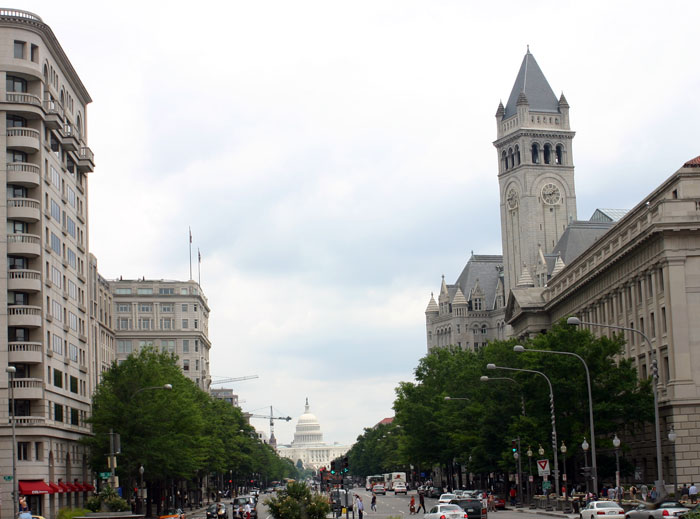
Pin oaks are one of America's most popular trees for big cities and suburban lawns. Unlike other oaks, they have one strong leader from which all the other branches grow. Unfortunately, the branches tend to grow downward, so the lowest branches have to be removed higher than those of other trees to provide the same clearance. But pin oaks can grow 75 feet tall and last a long time. Below, they grace an outdoor cafe along Pennsylvania Avenue near the capitol building.
